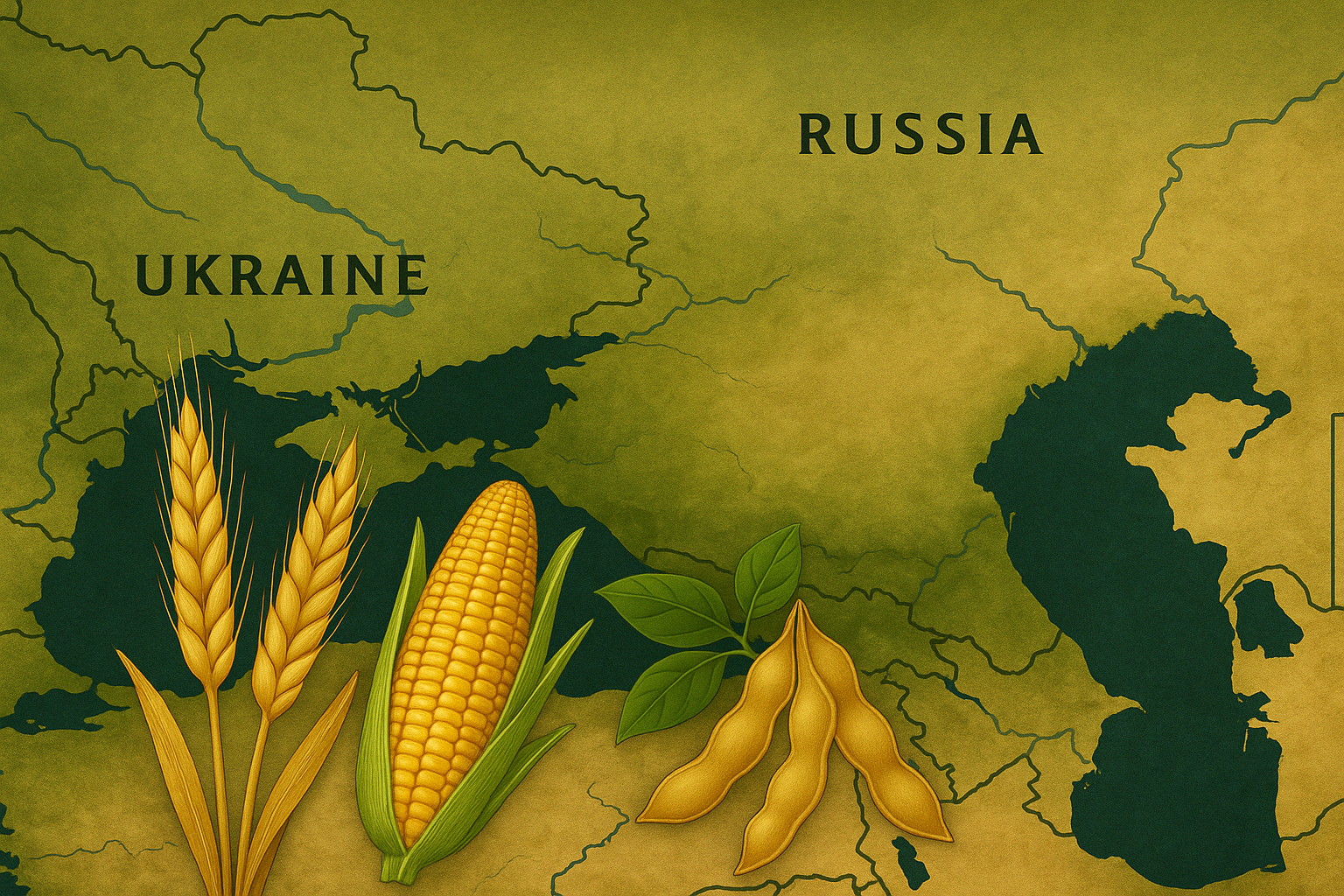Weather Patterns and Crop Conditions
The southern Black Sea region, especially southwestern Russia, has seen scattered rainfall in recent days, providing limited relief to winter wheat crops ahead of harvest. Although yields in key regions like Rostov and Krasnodar are trailing behind last year’s levels, the Stavropol Territory appears set for a stronger season. Accelerating heat, with temperatures reaching 33–35°C, is hastening harvesting operations across many areas.
In Ukraine, the weather remains mixed. Rainfall is expected across the western and central regions, which could benefit late-season crops like corn and sunflower but also slow the harvest of early grains. Southern Ukraine, however, continues to suffer from dry conditions. While national crop health assessments remain largely positive, warning signs—such as leaf yellowing in sunflower fields—are emerging due to deepening moisture deficits.
Romania: The Grain Powerhouse of the EU
Romania has officially cemented its role as the European Union’s largest grain exporter during the 2024/25 season, outperforming established leaders like France. The country exported 5.48 million tonnes of soft wheat, generating €1.24 billion in revenue, alongside 2.07 million tonnes of barley and 1.23 million tonnes of corn. This performance is attributed to strong domestic yields, favorable weather, and substantial upgrades in logistics infrastructure—particularly around ports and river corridors—enabling efficient throughput to international markets.
EU Trade Trends: Exports Decline, Imports Shift
The broader EU grain trade landscape is undergoing significant transformation. Soft wheat exports from the bloc fell by 35% this season to just over 20 million tonnes, largely due to poor harvests in France and rising competition from Black Sea exporters. Romania led EU wheat exports, followed by Germany and Lithuania, while France dropped to sixth place.
At the same time, maize imports into the EU increased by 4% to 19.65 million tonnes. Ukraine remained the dominant supplier, though its share declined compared to the previous season. The United States and Canada have notably expanded their share in this segment. On the import side for wheat, volumes also decreased by 19% year-on-year, with Ukraine again leading as the largest supplier. However, looming EU policy changes could place future limits on Ukrainian wheat volumes, as proposed quotas for the 2025/26 season may come into effect.
COFCO Strengthens Danube Logistics
One of the most strategically significant developments in the region has come from China’s COFCO International, which recently launched a proprietary barge fleet on the Danube River in Romania. The new fleet includes four push boats and 29 barges, each capable of transporting over 1,000 tonnes of grain. These vessels now connect nine inland storage facilities directly to the deep-water port of Constanța, streamlining the supply chain from Central Europe to global markets.
This move highlights the increasing value of sustainable, scalable transport solutions. Compared to trucks or trains, river barges offer both cost and environmental benefits, with a single barge able to replace up to 70 trucks—making the Danube–Black Sea corridor a rising star in agricultural logistics.
Oilseed Market: Optimism Despite Risks
The region’s role in the oilseed trade is also growing. Record harvests are projected for sunflower seed and rapeseed crops in 2025/26, driven by significant expansion in planted areas—especially in Russia, which added 1 million new hectares, and in Southeast European countries like Hungary, Romania, and Serbia.
While Ukraine faced weather setbacks in 2024 that limited sunflower yields, 2025 is expected to bring better productivity across the board. Ukraine remains a pivotal partner for the EU in the supply of rapeseed and soybeans. A striking development is that 98% of Ukraine’s sunflower seed crop will be crushed domestically, signaling a shift toward value-added processing and reduced exports of raw seed. This trend is likely to continue in 2025/26, potentially reshaping oilseed trade flows across Europe and Asia.
Despite this optimism, the oilseed market remains highly sensitive to a combination of unpredictable weather patterns, geopolitical risk, and regulatory changes, which could quickly alter availability and price trends.
The Black Sea region continues to redefine itself as a powerhouse in global grain and oilseed markets. Romania’s surge in exports, Ukraine’s continued resilience, and growing investments in riverine logistics underline the region’s increasing strategic value. Yet the road ahead remains complex. Unpredictable climate patterns, policy changes, and shifting trade alliances could impact the delicate balance of supply, demand, and competitiveness. As the 2025/26 season unfolds, market participants will need to closely monitor how key players adapt to these shifting dynamics—both in the field and across international ports.

